Introduction to the origin and variety characteristics of Yejashafi coffee beans
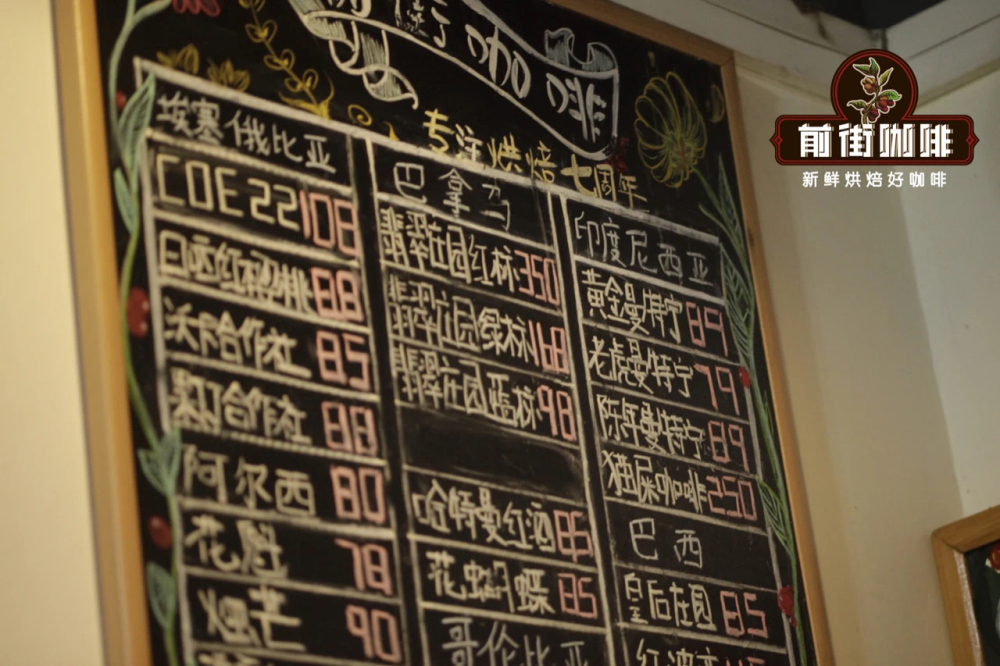
I believe that many coffee people, like Qianjie, fell into the pit of fine coffee because they drank a cup of floral fruit in a cafe one day. Later, whenever it comes to fine coffee, Front Street will first think of this most prestigious regional flavor.
Yega Shefi comes from the hometown of coffee
Ethiopia, as the birthplace of coffee, has preserved tens of thousands of Arabica native coffees, which can be said to be a natural coffee museum. Coffee is a very important cash crop in the local area. Coffee is grown in most parts of the country, and every household has the habit of drinking coffee.
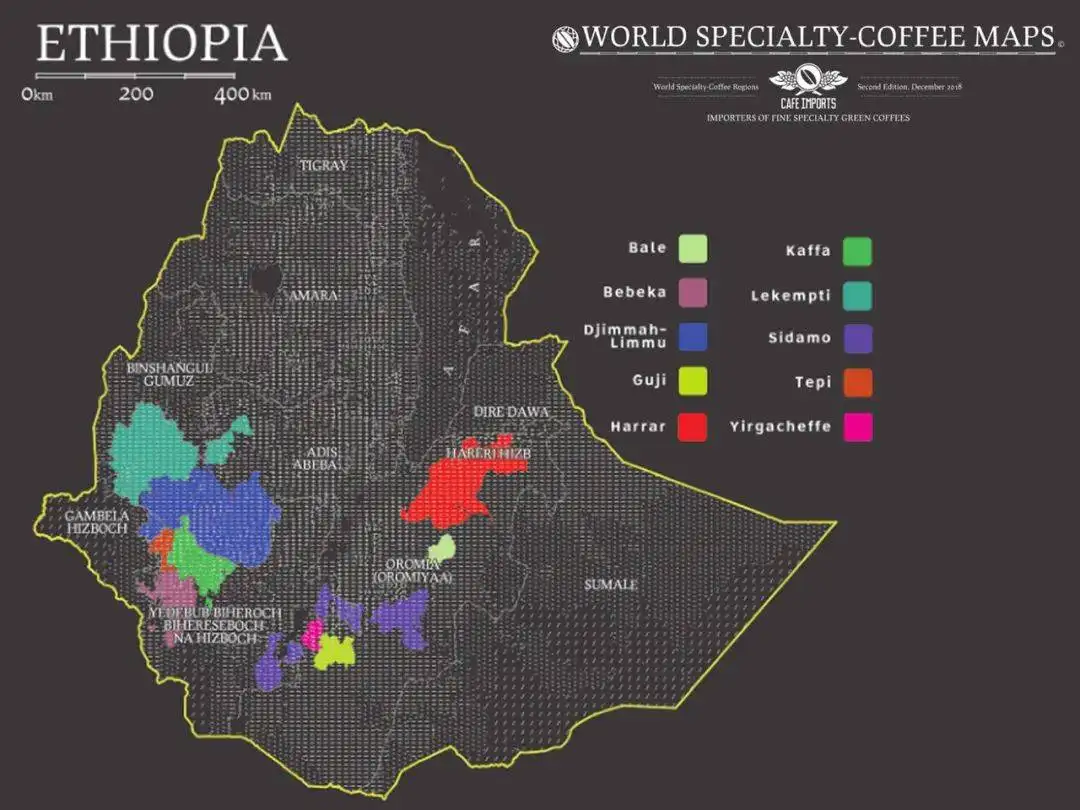
Yejia Shefei Town is located in Ethiopia's Sidama Province, with an altitude of more than 2,000 meters. It is one of the highest production areas in Ethiopia with an average altitude. Most coffee trees are planted in farmers 'backyards or mixed with other crops in the field. The yield per household is not much. It is a typical pastoral coffee. These mountain villages are foggy, spring all year round, cool but not hot in summer, rain but not damp in winter, thus nurturing this unique citrus and floral regional flavor.
Growing at an altitude of about 2,000 meters creates significant diurnal temperature differences, coffee trees grow slower, fruits take longer to ripen, and correspondingly store more aromatic substances, so the harvest season is later. Usually we see busy farmers harvesting coffee fruit in the hills and back gardens in October to January of the following year, producing the next year's batch of yega-shefi.
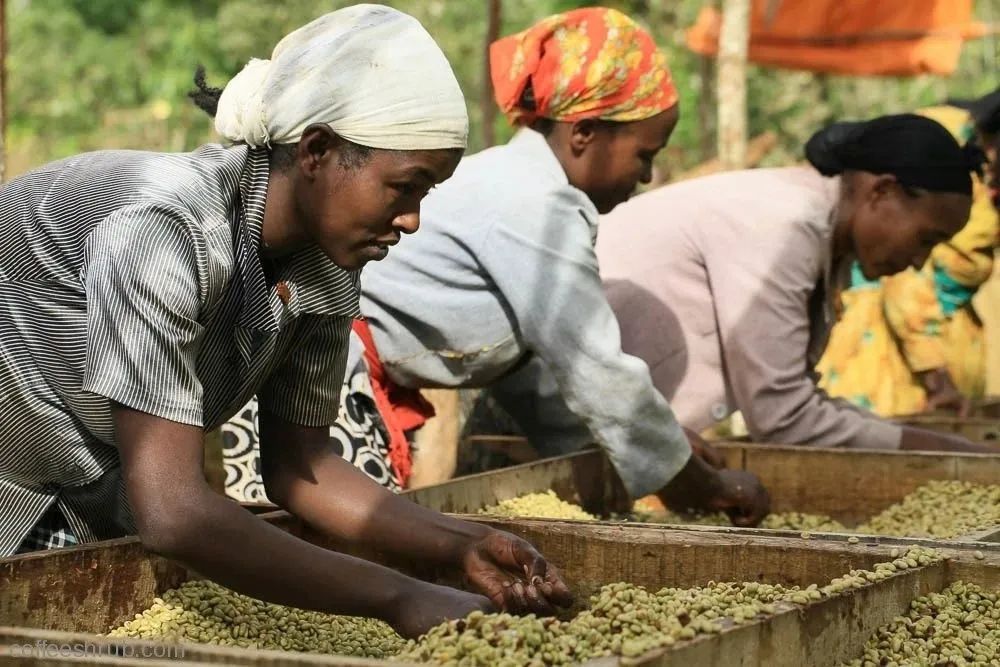
Water treatment credit
As we all know, Ethiopia, located on the African continent, has very scarce water resources. Coffee has traditionally been naturally dried in the sun. Due to the rough method, coffee beans are directly thrown into the mud or roof to dry, coffee is easy to absorb the soil smell on the ground, or uneven heating leads to excessive fermentation, which ultimately affects the quality of coffee. In order to improve the quality of coffee, the Ethiopian government introduced more advanced washing technology and related equipment from Central and South America in 1972. The flavor of Yerga Sherfi coffee shows fresh citrus tones and elegant white flowers, and the overall flavor is bright and delicate. Therefore, Yejia Xuefei became independent from the Sidama production area and became a well-known production area in today's coffee circle.
washing step: picking coffee cherries and putting them into water, picking out fruits with insufficient maturity by using buoyancy of water, removing peel/pulp of berries by using a peeling machine, and standing in a fermentation tank for 18-36 hours until pectin layer is decomposed. After fermentation, the shelled beans will be washed in the channel for 30-60 minutes. Through the special channel and water flow washing, the beans with low specific gravity and poor quality can be removed. Then the high-quality coffee beans will be drained and spread on the African shelf to dry. Finally, the target moisture content can be packaged and stored.
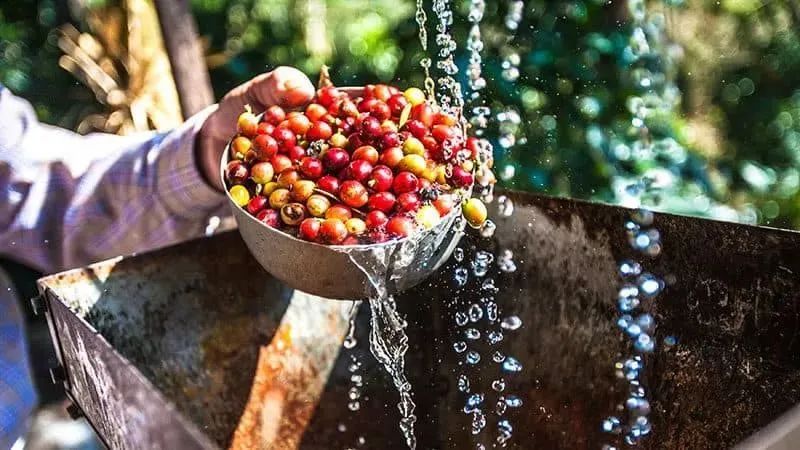
"Project Red Cherry"
Of course, yejia sherffy also has fine grade sun-cured coffee beans, and the red cherry coffee beans on the front street bean list are selected from sun-cured yejia sherffy.
In order to increase the income of Ethiopian farmers and the quality of coffee, Dutch trading company Trabocca BV launched the Red Cherry Project in 2007.(OPERATION CHERRY RED PROJECT), mainly for Ethiopia Yejia Shefei and other high-altitude production areas to improve washing, semi-washing, sun and other treatment technologies, and professional cup testing personnel to join, harvesting season will be different for different microclimate areas to develop different coffee harvest, must only harvest 100% mature red coffee cherries, yield about 1500-3000KG. Trabocca's financial support, new hardware and production know-how have greatly improved the quality of coffee beans in the Yegashefi region and even in Ethiopia as a whole, resulting in higher prices for coffee, thus increasing farmers 'incomes.
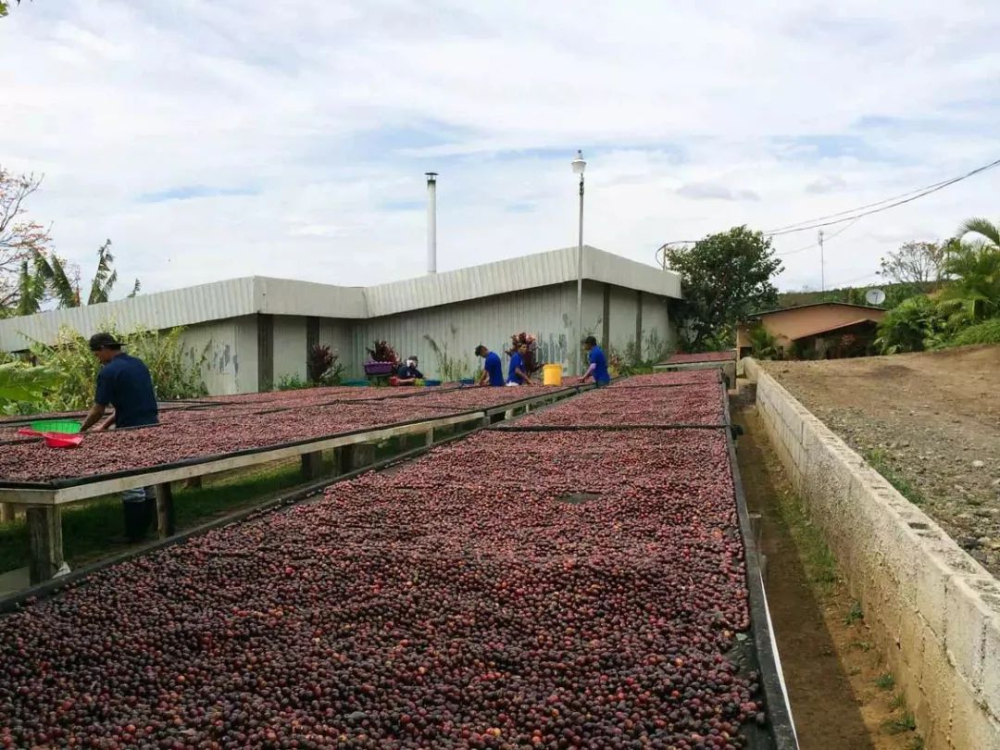
Freshly picked coffee red fruit, through artificial screening, defective beans and too ripe or moth-eaten selection out, leaving good beans. Then sent to the drying place for drying treatment, of course, different production areas use different drying racks, some will be waterproof cloth, high bed, etc., the most common is African drying bed, drying time generally takes 27-30 days, until the coffee turns dark purple, moisture content reduced to 11% is not complete. Sun-baked yejia snow has a stronger flavor, a richer layering, a wine fermentation flavor, and a higher sweetness.
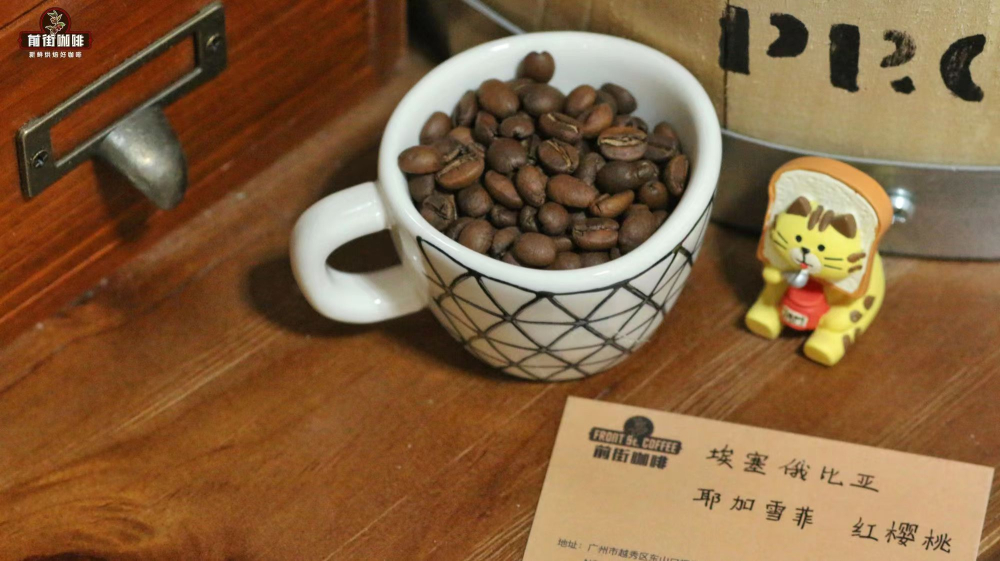
Guodingshe Cooperative
With the arrival of the era of specialty coffee, consumers will not only actively learn to tap more excellent single producing areas and growers, but also be more willing to pay higher prices for high-quality coffee, while giving back to each farmer. Kocher, Fog Valley, Godibe, etc., which we often hear, are well-known micro-producing areas under the Yejia Shefi coffee producing area. They all have excellent cooperative production teams and produce coffee with great characteristics.
The fruit tinting cooperative, with 300 cooperative smallholders, is known for growing the best quality coffee in Ethiopia. The treatment method also follows the most traditional washing method, which is known as "the last pure land of Yejia Shefei". For coffee drinkers on Front Street, if they want to drink washed fruit coffee, Front Street baristas will give priority to fruit co-op coffee on the bean rack. The use of washed fruit Ding Ding cooperative coffee, not only does not have the traditional black coffee bitter, fresh and bright citrus, citric acid, and jasmine fragrance, let many coffee people fall in love with it.
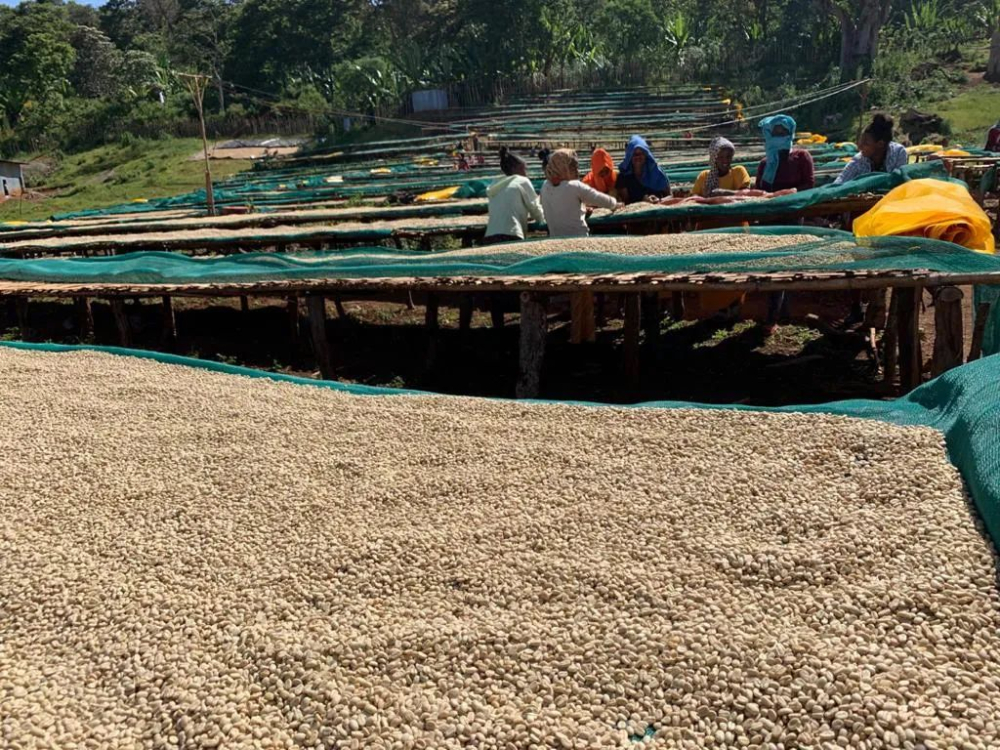
The species of Yegashefi is called the original species.
Among the Ethiopian coffee beans we often buy, the varieties are written as local native species or Heirloom native species, and the particles are small and different in shape, which is quite different from the coffee beans from other producing areas.
This is because in Ethiopia's virgin forests, coffee varieties are numerous, genetic types are numerous, identification is very difficult, and the local government wants to protect these species from disclosure, so they are collectively referred to as "native species." Yega sherffy coffee varieties are native species, small particle species, relatively round shape, very small beans, mostly between 14-15 mesh.
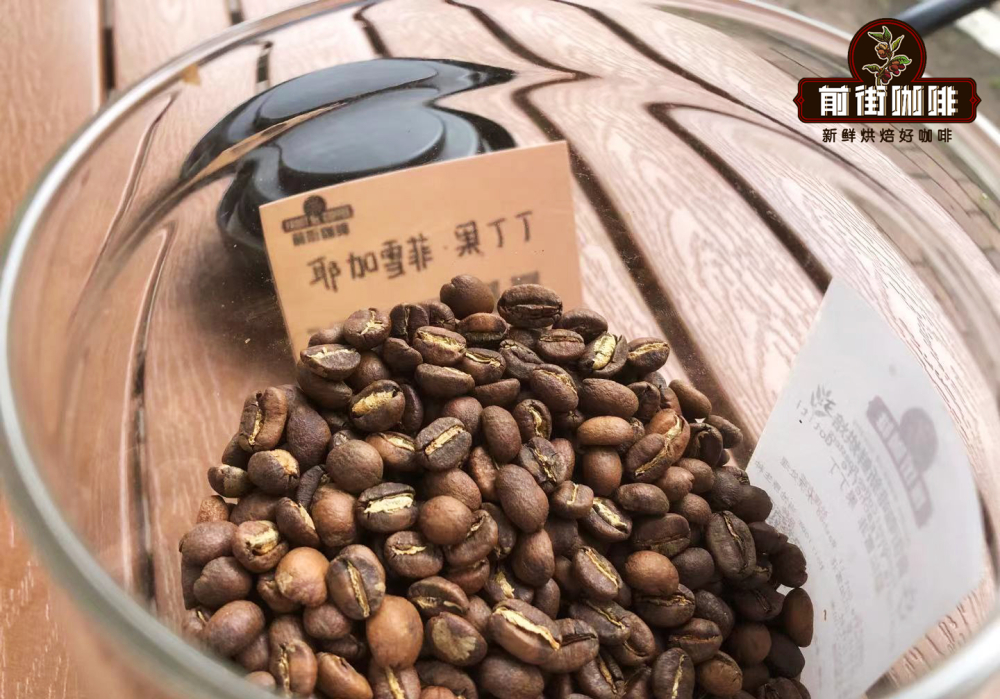
Why do so many people like the Yerga Shefi flavor?
Different from the era of "coffee bitter", the light-roasted Yega Shefi can be said to have opened a new era of "fruit acid coffee." Coffee is strong bitter, mainly because roasters roast coffee beans deep, the main flavor direction is nuts, dark chocolate. As the concept of specialty coffee emerged, roasters roasted Yergarschaffe coffee to just the right lightness to preserve more acid, giving Yergarschaffe a pleasant fruity tart and white floral aroma.
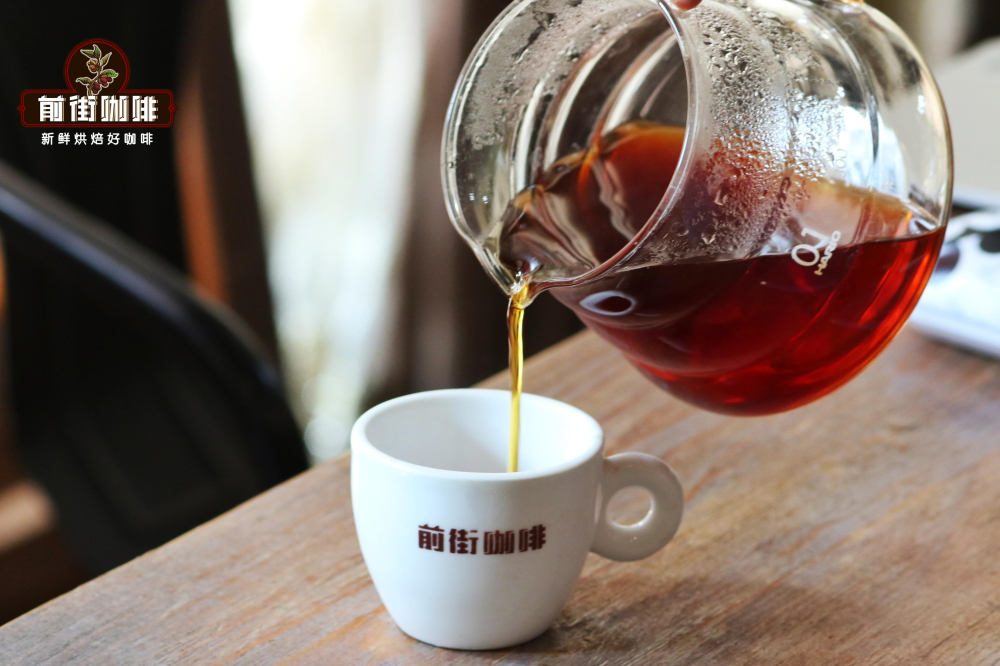
This is precisely the taste of the masses, which is one of the reasons why Yegashefi is so popular around the world. Such popular Ye Jia Xue Fei coffee, front street will certainly also add it to the coffee starter ration bean series. The ration beans on the front street can let friends who have just come into contact with coffee circle taste the basic flavor of the producing area at an ultra-low price, and the design of small package can also avoid the phenomenon of endless waste.
Yega Shefi's brewing parameters:
Filter cup: V60 Water temperature: 92-93 degrees Celsius Powder amount: 15g Powder water ratio: 1:15 Grinding degree: Fine sugar size (No. 20 sieve bowl sieve powder to 78%)
In the first stage, 30 grams of water was injected for 30 seconds, followed by 95 grams (about 125 grams on the electronic scale), which was injected in about 1 minute. When the water level dropped to 2/3 of the powder layer, the remaining 100 grams (about 225 grams on the electronic scale) was injected in about 1 minute and 35 seconds. 2 '10 "Drip filtration complete, remove the filter bowl, complete extraction.
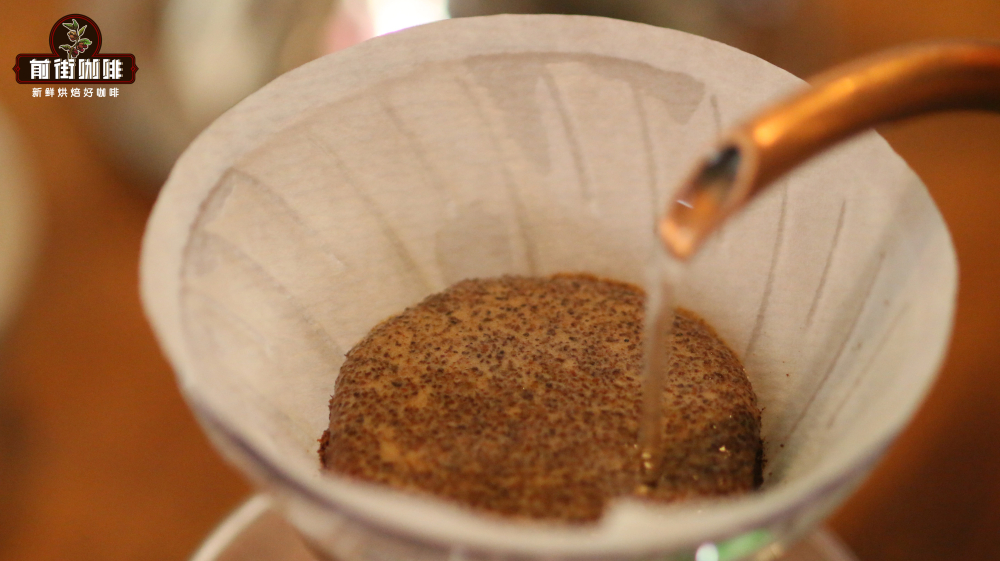
Sun red cherry coffee flavor: lemon, licorice, citrus, berry, sweet orange, overall sweetness is higher, sweet caramel, cream flavor, finish with black tea aroma.
Water-washed fruit tintin cooperative coffee flavor: citrus, black tea at the entrance, cream, caramel, almond aftertaste with the change of temperature and clear sweet taste.
Professional coffee knowledge exchange More coffee bean information Please pay attention to coffee workshop (Weixin Official Accounts cafe_style)
More fine coffee beans, please add private WeChat Qianjie Coffee, WeChat: qjcoffeex
Important Notice :
前街咖啡 FrontStreet Coffee has moved to new addredd:
FrontStreet Coffee Address: 315,Donghua East Road,GuangZhou
Tel:020 38364473
- Prev
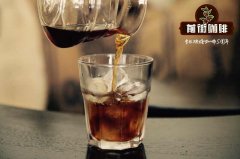
Peruvian coffee is fine coffee? Peruvian coffee evaluation is good? Peruvian black coffee bitter?
Professional coffee knowledge exchange More coffee bean information Please pay attention to coffee workshop (Weixin Official Accounts cafe_style) There are not many records about coffee introduced into Peru, but we know that it was introduced into Peru in the late 18th century. Most of the coffee grown in Peru is grown on small farms high in the Andes, less than 2 to 3 hectares in size and located at an altitude of about 1
- Next

Peruvian Miracle Coffee Manor what Coffee Manor in Peru is Peruvian Coffee Manor good?
Professional coffee knowledge exchange more coffee bean information please follow the coffee workshop (Wechat official account cafe_style) Peruvian Wonder Coffee Manor El Milagro is perhaps the smallest of all our partners, CASM El Milagro has been supplying us since 2010 and has been providing us with a stable Peruvian FTO. Although this achievement itself may be noteworthy,
Related
- Beginners will see the "Coffee pull flower" guide!
- What is the difference between ice blog purified milk and ordinary milk coffee?
- Why is the Philippines the largest producer of crops in Liberia?
- For coffee extraction, should the fine powder be retained?
- How does extracted espresso fill pressed powder? How much strength does it take to press the powder?
- How to make jasmine cold extract coffee? Is the jasmine + latte good?
- Will this little toy really make the coffee taste better? How does Lily Drip affect coffee extraction?
- Will the action of slapping the filter cup also affect coffee extraction?
- What's the difference between powder-to-water ratio and powder-to-liquid ratio?
- What is the Ethiopian local species? What does it have to do with Heirloom native species?

